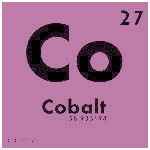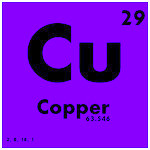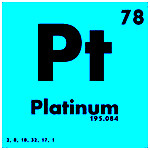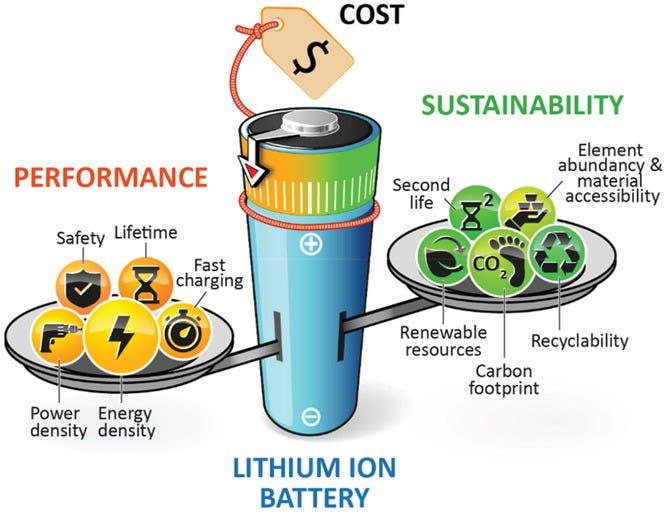Environment and Human Rights News
The International Crisis Group said in a new report that small-scale, artisanal cobalt miners in the Democratic Republic of the Congo are increasingly finding work within land already handed over to huge multinational companies.
In 2019, state security forces were brought in to make clear who owned which resources, and 10,000 artisanal miners were expelled. The ICC has urged the DRC government to create artisanal mining zones and mining companies to uphold their legal obligations.

Cobalt (Flickr). See last week’s post ‘Will cobalt ever die’?
The potential for urban mining keeps growing. A UN study found that in just a year, electronics waste increased by 21% — meaning anything with a circuit board or that conducts electricity. Just 1 in 6 gadgets were recovered and recycled. The UN has called the growth “unsustainable.”
Ocean mining has the potential to fulfill base metal demand for renewable energies. That’s why the Ocean Panel, a coalition of states seeking to build a sustainable ocean economy, commissioned a report on the coming industry. The verdict: Don’t touch anything until we can understand the impacts of mining the sea floor.
10% of global emissions come directly from mining the earth. Wood Mackenzie said this week, however, that miners are “obligated” to deliver supply for clean energy. The consultancy agrees mining needs to decarbonize so that warming remains under 2ºC. That will require a $110/ton CO2 tax, it says, which could amount to a quarter of all revenues for the steel industry if nothing is done to mitigate carbon emissions. Essentially, miners are tasked with cleaning up energy, but if they don’t clean up their own, we’ll keep warming.
Tailings dams, numbering likely tens of thousands around the world, are in some places a “ticking time bomb.” A coalition of NGOS, led by MiningWatch Canada and Earthworks, published recommendations for the management of tailings dams.
Signatories to the report number 142 and include scientists, researchers, and NGOs from 24 countries. The publication preempts the similar but industry-led Global Tailings Review, which will likely be released in July.
Meanwhile, a tailings dam at a gold mine in Ecuador collapsed, and government said they would prohibit activity for the time being and open an investigation. Below, a video from the river:


What else in Industry news?
Issues in the EV supply chain need to be urgently addressed as the industry enters a “boom”, according to a report from the UN Conference on Trade and Development. Metal reserves are heavily concentrated in specific regions: Nearly 50% of cobalt is in the DRC, 58% of lithium is in Chile, 80% of natural graphite is in China, Brazil and Turkey, and 75% of manganese is in Australia, Brazil, South Africa and Ukraine.
It recommends, for example, “facilitating research into battery technologies that depend less on critical raw materials and with potential to provide higher energy density.”
Copper is in a supply rut, and it’s sending prices sky high. According to a recent S&P Global Market Intelligence report, that could be because nobody has been looking for copper deposits. Of all the copper reserves discovered in the last 2 decades, only 8% have been found in the last decade
Meanwhile, Chile’s state-owned copper miner Codelco has been charged over a tailings spill in 2016 that polluted rivers and estuaries.

Copper (Flickr)
Tesla Supplier CATL is setting up an almost $500-million research facility focused on batteries, and they received lithium-ion Nobel Laureate John Goodenough’s endorsement.
A new lithium deposit in Mexico has sparked a battle between union workers and the environment ministry. The ministry has called to nationalize the reserve, but a union organization doesn’t want to scare off foreign investment.
One of the largest producers of nickel, Norilsk Nickel in Russia, has been ordered to suspend operations after a fuel spill.
Mining Weekly is reporting that a series of business announcements spell promise for platinum-group metals. The group consists of six metals (ruthenium, rhodium, palladium, osmium, iridium and platinum), that tend to occur together and have similar properties. In South Africa, which has the largest reserves of the metals, a boom may be in store, because the metals are used often in hydrogen fuel cells.

Platinum (From Flickr)
Research News
We don’t know how we’re going to get to clean energy. To find out, we need heavy research. For deep explorations of the newest battery science, I recommend the newsletter Intercalation Station. Below are some relevant highlights from their most recent edition.
A key part of a sustainable economy is recycling. Mined metals could theoretically last indefinitely, if metals at the end of their life could be repurposed by recycling companies. This new paper outlines how to create such a circular economy.
A team in Germany assessed available battery technologies by their environmental impact. One conclusion: “new efficient, cheap and sustainable energy storage technologies are urgently needed.”

(From the paper, CC license)
Recommended reads
Tesla and the science behind the next-generation, lower-cost, ‘million-mile’ electric-car battery (CNBC)
Shirley Meng, a materials scientist and professor at the University of California San Diego, cautioned that scientists, unlike business executives, prefer to underpromise and overdeliver. “What I see is lots of breakthroughs, and we are already a few steps ahead. We have a pathway,” Meng said. But she added of CEOs, “They believe they can do it at scale. I am not sure we are there yet.”
We need a 'million mile' battery for more than just electric vehicles. (GreenBiz)
A reminder that metals may not make the best energy storage devices. How do you save clean energy? This company plans to pump it underground. (Grist)
Subscribe with just your email, and weekly reports with round-ups and original reporting will go directly to your inbox. It’s free! (for now)
These topics are relevant to anyone who consumes energy. If you know someone like that, share freely!




